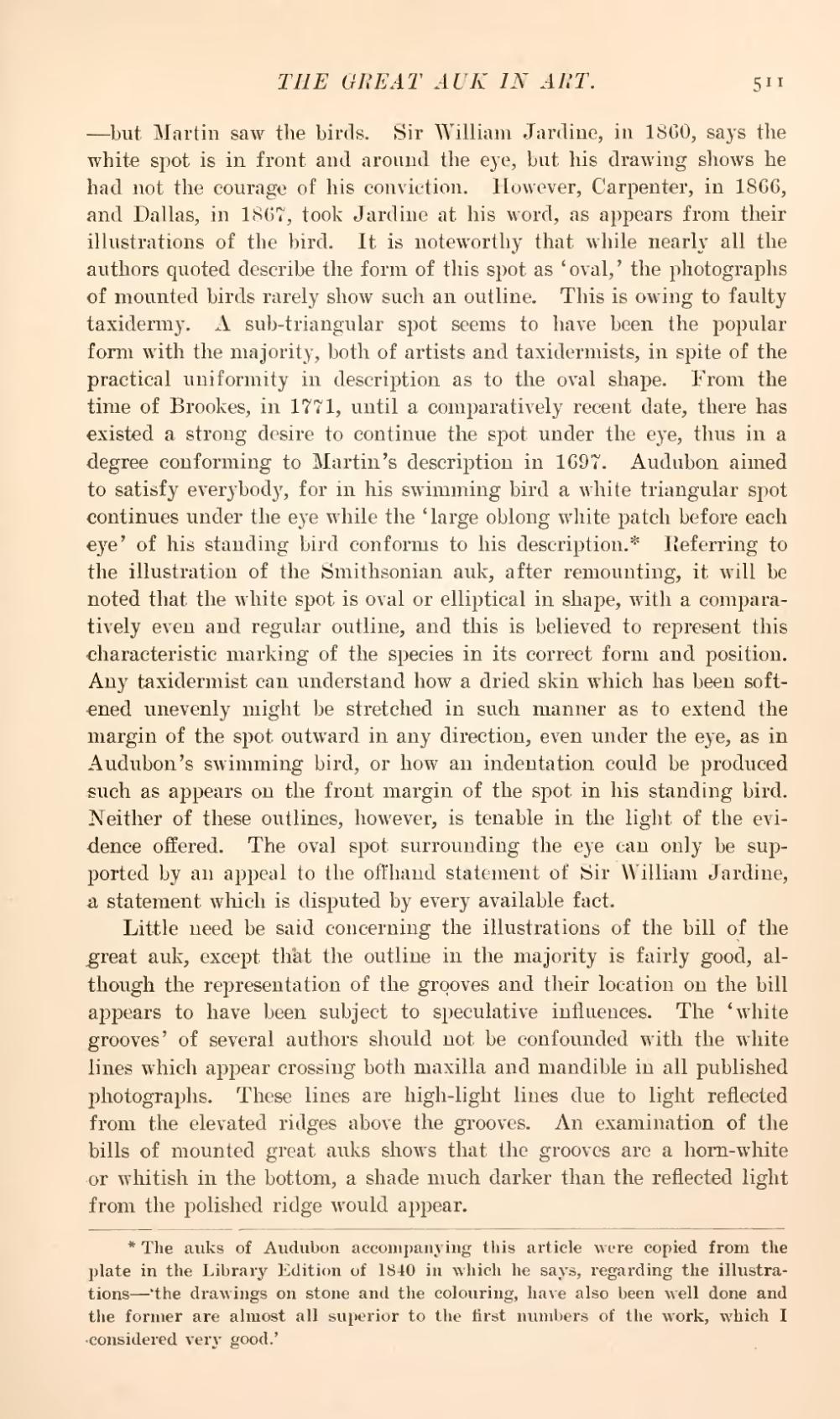—but Martin saw the birds. Sir William Jardine, in 1860, says the white spot is in front and around the eye, but his drawing shows he had not the courage of his conviction. However, Carpenter, in 1866, and Dallas, in 1867, took Jardine at his word, as appears from their illustrations of the bird. It is noteworthy that while nearly all the authors quoted describe the form of this spot as 'oval,' the photographs of mounted birds rarely show such an outline. This is owing to faulty taxidermy. A sub-triangular spot seems to have been the popular form with the majority, both of artists and taxidermists, in spite of the practical uniformity in description as to the oval shape. From the time of Brookes, in 1771, until a comparatively recent date, there has existed a strong desire to continue the spot under the eye, thus in a degree conforming to Martin's description in 1697. Audubon aimed to satisfy everybody, for in his swimming bird a white triangular spot continues under the eye while the 'large oblong white patch before each eye' of his standing bird conforms to his description.[1] Referring to the illustration of the Smithsonian auk, after remounting, it will be noted that the white spot is oval or elliptical in shape, with a comparatively even and regular outline, and this is believed to represent this characteristic marking of the species in its correct form and position. Any taxidermist can understand how a dried skin which has been softened unevenly might be stretched in such manner as to extend the margin of the spot outward in any direction, even under the eye, as in Audubon's swimming bird, or how an indentation could be produced such as appears on the front margin of the spot in his standing bird. Neither of these outlines, however, is tenable in the light of the evidence offered. The oval spot surrounding the eye can only be supported by an appeal to the offhand statement of Sir William Jardine, a statement which is disputed by every available fact.
Little need be said concerning the illustrations of the bill of the great auk, except that the outline in the majority is fairly good, although the representation of the grooves and their location on the bill appears to have been subject to speculative influences. The 'white grooves' of several authors should not be confounded with the white lines which appear crossing both maxilla and mandible in all published photographs. These lines are high-light lines due to light reflected from the elevated ridges above the grooves. An examination of the bills of mounted great auks shows that the grooves are a horn-white or whitish in the bottom, a shade much darker than the reflected light from the polished ridge would appear.
- ↑ The auks of Audubon accompanying this article were copied from the plate in the Library Edition of 1840 in which he says, regarding the illustrations—the drawings on stone and the colouring, have also been well done and the former are almost all superior to the first numbers of the work, which I considered very good.'
